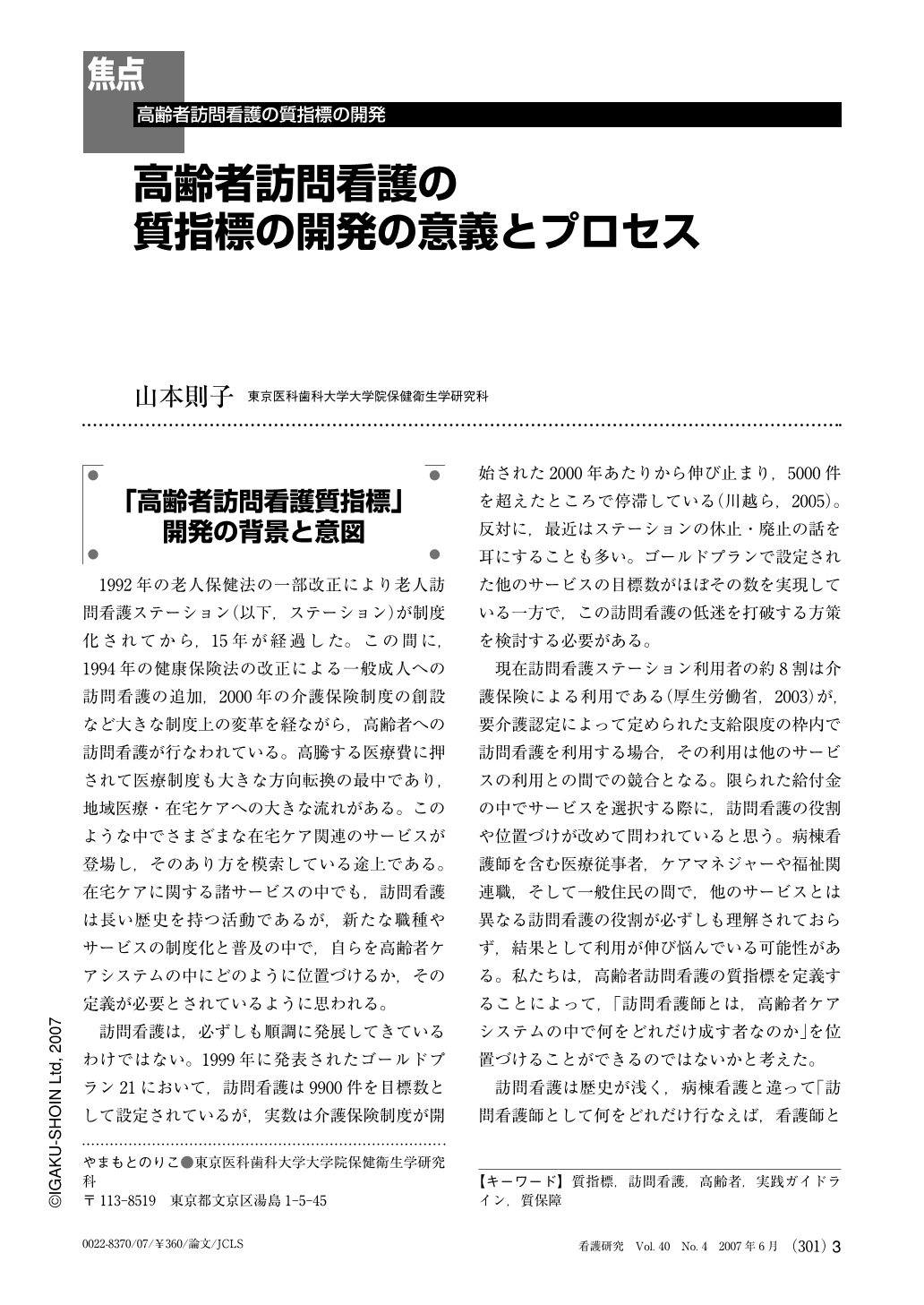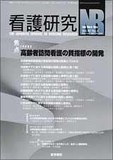Japanese
English
- 有料閲覧
- Abstract 文献概要
- 1ページ目 Look Inside
- 参考文献 Reference
- サイト内被引用 Cited by
「高齢者訪問看護質指標」開発の背景と意図
1992年の老人保健法の一部改正により老人訪問看護ステーション(以下,ステーション)が制度化されてから,15年が経過した。この間に,1994年の健康保険法の改正による一般成人への訪問看護の追加,2000年の介護保険制度の創設など大きな制度上の変革を経ながら,高齢者への訪問看護が行なわれている。高騰する医療費に押されて医療制度も大きな方向転換の最中であり,地域医療・在宅ケアへの大きな流れがある。このような中でさまざまな在宅ケア関連のサービスが登場し,そのあり方を模索している途上である。在宅ケアに関する諸サービスの中でも,訪問看護は長い歴史を持つ活動であるが,新たな職種やサービスの制度化と普及の中で,自らを高齢者ケアシステムの中にどのように位置づけるか,その定義が必要とされているように思われる。
訪問看護は,必ずしも順調に発展してきているわけではない。1999年に発表されたゴールドプラン21において,訪問看護は9900件を目標数として設定されているが,実数は介護保険制度が開始された2000年あたりから伸び止まり,5000件を超えたところで停滞している(川越ら,2005)。反対に,最近はステーションの休止・廃止の話を耳にすることも多い。ゴールドプランで設定された他のサービスの目標数がほぼその数を実現している一方で,この訪問看護の低迷を打破する方策を検討する必要がある。
Quality indicators (QIs) of home nursing for aged have been developed in order to guide the home nursing practice by delineating standard care processes for the 16 typically practiced areas. This paper explains the background and the outline of a research project to develop the QIs. A number of new professionals and services have been introduced to serve aged in Japan recently, especially since the introduction of the long-term care insurance system in 2000. Among the services, home nursing is one with a long historical background, but a new definition of its practice is needed in order for it to function better in the contemporary health care system. We aim at developing the QIs that delineate what should be done in the given problem areas of nursing, thus practically defining what nurses should do in home for aged. The QIs are general tools to evaluate the quality of a service ; several QIs developed for home nursing to date have mainly targeted either structure or outcome. Our current project focuses on the care process, and it is inspired by the Assessing the Care of Vulnerable Elders (ACOVE) project in the US. Our QIs were developed based upon both literature review and discussions with expert panels of both individual specialty areas and home nursing. The resultant QIs were used to conduct a national survey on home nursing practice, and the survey results generally supported the applicability of the QIs to current home nursing practice. Thus our QIs were developed out of the research process and they are supported by objective data, rather than simply gathering the opinions/practices of some experts. These QIs are targeted at three groups of practitioners : 1) novices to home nursing so that they can have a general picture of the care they are required to provide ; 2) practicing home nurses who wonder what needs to be done and to what extent for the typical problems of their clients ; and 3) the directors of home nursing stations who are mindful of quality improvement/assurance of their service yet are with limited resources to provide the staff with enough in-service training. The QIs can be used as a practical tool for reviewing current care standards. Although the process of developing effective QIs continues and more studies are still needed, in the following papers, we present current findings regarding the QIs of selected areas. In doing so we hope to share with the readers the idea of how nursing research should assist nursing practice and how research methods should serve the purpose of research projects.

Copyright © 2007, Igaku-Shoin Ltd. All rights reserved.


